In the vast tapestry of the animal kingdom, few creatures capture the imagination quite like the llama. With their long necks, expressive faces, and often fluffy coats, these iconic South American camelids are far more than just charming faces. They are a testament to adaptation, a cornerstone of ancient cultures, and a fascinating subject for anyone interested in the natural world. From their evolutionary lineage stretching back millions of years to their vital role in modern ecosystems and human societies, the llama offers a wealth of knowledge for the curious mind.
Prepare to embark on a journey into the world of the llama, uncovering their secrets, understanding their behaviors, and appreciating their enduring legacy. Whether you are a student researching their habitat, an animal lover hoping to spot one in the wild, an aspiring zoologist, or even a zookeeper, this comprehensive guide will illuminate the remarkable life of the llama.

Understanding the Llama: A Gentle Giant of the Andes
The llama, scientifically known as Lama glama, is a domesticated South American camelid, closely related to alpacas, guanacos, and vicuñas. While often mistaken for their wild cousin, the guanaco, llamas have been bred by humans for thousands of years, resulting in distinct characteristics that make them incredibly versatile and valuable.
Physical Characteristics: Built for the Mountains
Llamas are impressive animals, standing tall and robust. An adult llama typically measures between 1.7 to 1.8 meters (5.5 to 6 feet) from the top of its head to the ground, with shoulder heights ranging from 1.0 to 1.2 meters (3.3 to 3.9 feet). Their weight can vary significantly, usually falling between 130 to 200 kilograms (280 to 450 pounds). Their coats come in a wide array of colors, from solid white, black, and brown to various shades of grey and intricate spotted patterns. Unlike sheep, their wool is typically coarser, though still highly valued for textiles.
Distinctive features include their long, slender necks, large, expressive eyes, and banana-shaped ears that are often held erect, conveying their mood. Their feet are unique among ungulates, featuring two toes with leathery pads and strong nails, perfectly adapted for gripping rocky, uneven terrain without causing significant damage to delicate ecosystems.
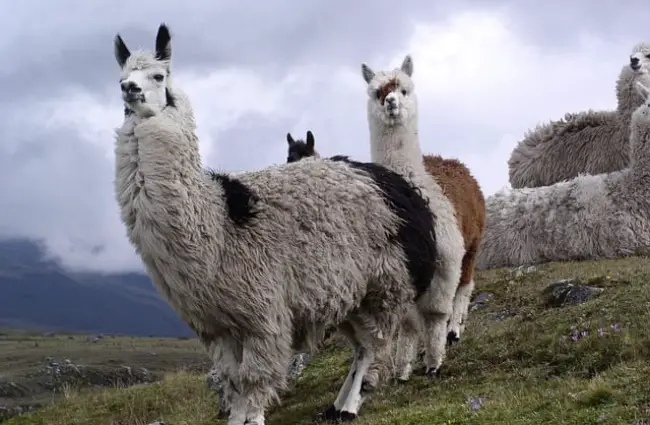
Llama Habitat: High Altitude Homes
While llamas are domesticated, their ancestral roots and the regions where they thrive are the high-altitude plateaus and mountains of the Andes in South America. Specifically, they are found across Peru, Bolivia, Ecuador, Chile, and Argentina. These environments are characterized by:
- High Elevations: Typically ranging from 2,300 meters (7,500 feet) up to 4,000 meters (13,000 feet) above sea level.
- Varied Terrain: Including arid plains, semi-arid grasslands, and mountainous slopes.
- Harsh Climates: Experiencing significant temperature fluctuations between day and night, strong winds, and often sparse vegetation.
Their thick coats and efficient respiratory and circulatory systems are adaptations that allow them to flourish in these challenging conditions. While wild llamas are rare, feral populations can sometimes be found in areas where they have escaped domestication, particularly in parts of Argentina and Chile. For an animal lover hoping to find a llama in the wild, focusing on observing guanacos in their natural Andean habitats is a more realistic goal, as true wild llamas are essentially non-existent, being a domesticated species.
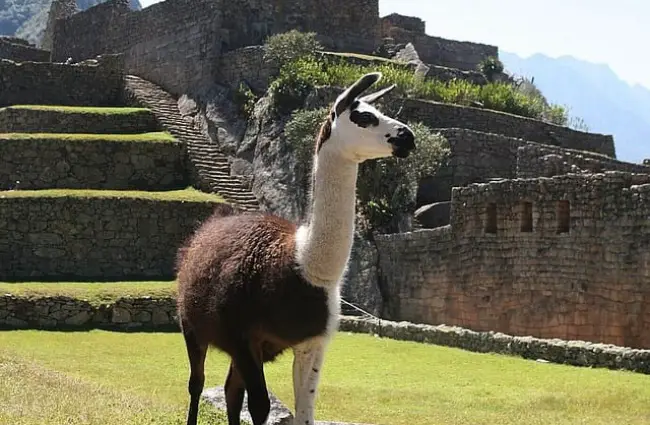
What’s on the Menu? The Llama Diet
Llamas are herbivores, primarily browsers and grazers. Their diet is well-suited to the often-sparse vegetation of their native high-altitude environments. They are incredibly efficient at extracting nutrients from tough, fibrous plants. Their typical diet includes:
- Grasses
- Shrubs
- Lichens
- Fungi
- Mountain plants
Like other camelids, llamas have a three-chambered stomach, which allows for a thorough fermentation process, breaking down cellulose and maximizing nutrient absorption. They are known for their ability to survive on relatively poor-quality forage, making them ideal livestock for marginal lands. They also require access to fresh water, though they can go for extended periods without drinking if their forage contains sufficient moisture.
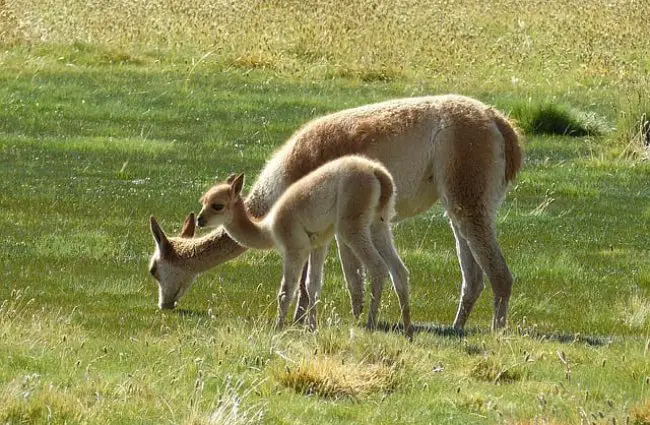
Social Life and Communication: More Than Just Spitting
Llamas are highly social animals, living in herds that typically consist of several females, their offspring, and a dominant male. Their social structure is vital for protection and companionship. Communication among llamas is surprisingly sophisticated and involves a variety of methods:
- Vocalizations:
- Humming: A common, soft sound indicating contentment, curiosity, or mild concern.
- Alarm Calls: A loud, high-pitched bleat or scream to warn the herd of predators.
- “Orgling”: A guttural sound made by males during mating.
- Body Language:
- Ear Position: Erect ears often signify alertness or interest, while flattened ears can indicate aggression or fear.
- Tail Position: A raised tail can signal excitement or alarm.
- Neck Posture: A high, erect neck suggests confidence, while a lowered neck might indicate submission.
- Spitting: Perhaps their most famous form of communication, spitting is usually a warning or a way to establish dominance within the herd. It is rarely directed at humans unless the llama feels threatened, overly annoyed, or has been improperly socialized. It is a clear sign of displeasure.
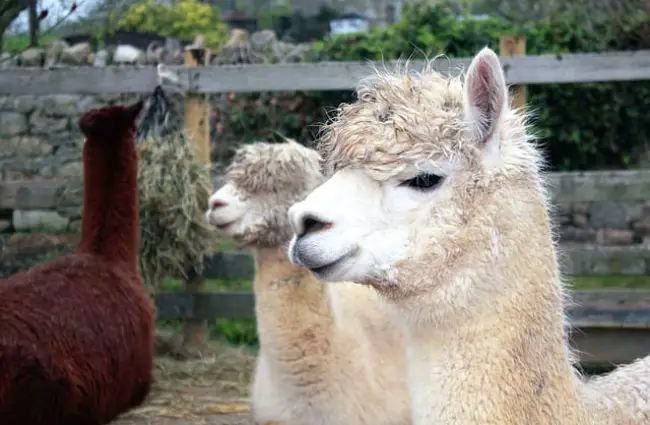
Reproduction and Life Cycle: The Arrival of a Cria
Llamas are induced ovulators, meaning ovulation is triggered by the act of mating. This ensures a high success rate for conception. Mating can occur year-round, though it often peaks during certain seasons in specific regions. The gestation period for a llama is approximately 11.5 months (about 350 days). Females typically give birth to a single offspring, known as a “cria” (Spanish for “baby”), usually during daylight hours. This daytime birthing is thought to be an adaptation to the cold Andean nights, allowing the cria to dry and bond with its mother before temperatures drop.
- Birth Weight: Crias weigh between 8 to 16 kilograms (18 to 35 pounds) at birth.
- Rapid Development: They are precocial, meaning they are able to stand, walk, and nurse within an hour or two of birth.
- Weaning: Crias are typically weaned at around 5 to 6 months of age.
- Sexual Maturity: Females reach sexual maturity between 18 to 24 months, while males mature later, around 2 to 3 years of age.
- Lifespan: Llamas have a relatively long lifespan, often living for 15 to 25 years, with some individuals reaching 30 years in well-managed captive environments.
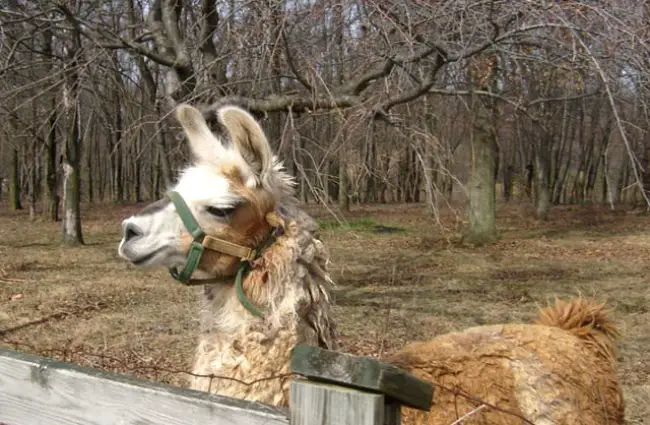
The Deeper Dive: Llama Expertise for the Enthusiast
The Evolutionary Journey of the Llama
The story of the llama begins millions of years ago in North America. The camelid family, which includes camels, dromedaries, and the South American camelids, originated on the North American continent approximately 40 to 45 million years ago. Around 3 million years ago, during the Pliocene epoch, ancestors of modern llamas migrated south across the newly formed Isthmus of Panama into South America. Simultaneously, other camelids migrated across the Bering land bridge into Asia, giving rise to the Old World camels.
In South America, these ancestral camelids diversified into two genera: Lama (guanacos and llamas) and Vicugna (vicuñas and alpacas). The guanaco (Lama guanicoe) is considered the wild ancestor of the domesticated llama. Genetic evidence strongly supports the theory that llamas were domesticated from guanacos in the Andean highlands of Peru approximately 4,500 to 5,000 years ago. This domestication process transformed a wild, wary animal into the adaptable and docile creature we know today, primarily for its utility as a pack animal and for its fiber and meat.

Llamas in the Wild: Finding and Interacting
As a domesticated species, finding a “wild” llama in its original, undomesticated form is not possible. However, feral llama populations do exist in some areas, particularly in parts of Argentina and Chile, where they have escaped human care and established self-sustaining groups. More commonly, one might encounter their wild ancestor, the guanaco, in the vast landscapes of Patagonia and the high Andes.
For the animal lover aiming to find llamas (or guanacos) in the wild:
- Where to Look: Focus on protected areas and national parks in the Andean regions of South America. Guanacos are prevalent in places like Torres del Paine National Park in Chile, and various reserves in Argentina and Peru. Feral llamas might be found in less populated, remote areas.
- How to Find Them: Look for open grasslands, shrublands, and rocky slopes where they graze. They are often seen in small herds. Binoculars are essential for observation from a respectful distance.
- Best Time: Early morning and late afternoon are often the best times for wildlife viewing when animals are most active.
If a hiker encounters a llama (or guanaco) in the wild:
- Maintain Distance: Always give the animal ample space. Do not approach them, especially if they have young.
- Observe Behavior: Watch for signs of discomfort. Flattened ears, a stiff posture, or an alarm call indicate you are too close.
- Stay Calm and Quiet: Avoid sudden movements or loud noises.
- Never Feed Wild Animals: This can alter their natural behavior and make them dependent on humans, which is detrimental to their survival.
- What to Do if Approached: If a llama or guanaco approaches you, it is likely out of curiosity. Remain calm, avoid direct eye contact (which can be perceived as a challenge), and slowly back away. If a llama spits, it is a clear sign you have overstepped its boundaries.
The Llama’s Contribution to Ecosystems and Interaction with Other Animals
While primarily domesticated, llamas and their wild relatives, the guanacos, play significant ecological roles in their native habitats:
- Grazing and Browsing: As herbivores, they help manage vegetation growth, preventing overgrowth and promoting biodiversity by selectively grazing. Their soft, padded feet cause less soil compaction and erosion compared to hard-hoofed livestock.
- Seed Dispersal: By consuming plants and moving across landscapes, they contribute to seed dispersal through their droppings, aiding in plant propagation.
- Prey for Predators: In the wild, guanacos are a food source for apex predators like pumas, contributing to the balance of the food web. Llamas, particularly feral ones, can also serve this role.
- Guard Animals: In human-managed ecosystems, llamas are increasingly used as guard animals for sheep and goats. Their natural wariness, size, and territorial instincts make them effective deterrents against predators such as coyotes and even stray dogs. They will often stand their ground, chase, or even kick at perceived threats, protecting their flock.
- Interaction with Other Herbivores: They often share grazing lands with other herbivores, such as vicuñas and deer, generally coexisting peacefully due to their adaptable diet.
Llamas and Humanity: A Timeless Partnership
The relationship between llamas and humans spans millennia, deeply woven into the fabric of Andean cultures. Their domestication was a pivotal moment in the development of civilizations in South America.
- Historical Contributions:
- Pack Animals: For thousands of years, llamas have been the primary beasts of burden in the Andes, capable of carrying loads of 25 to 30% of their body weight (around 45 to 60 kg or 100 to 130 lbs) over rugged terrain for many kilometers a day. This ability was crucial for trade, transportation, and the expansion of empires like the Inca.
- Fiber: Their wool, though coarser than alpaca fiber, has been used for clothing, blankets, ropes, and other textiles.
- Meat: Llama meat has historically been a significant protein source for Andean communities.
- Hides and Dung: Hides were used for leather goods, and dried llama dung served as fuel in treeless high-altitude regions.
- Modern Contributions:
- Guard Animals: As mentioned, their use as guardians for livestock is a growing trend globally.
- Fiber Production: While alpacas are more renowned for fine fiber, llama wool is still harvested and used, particularly for durable outer garments and rugs.
- Trekking and Tourism: Llamas are popular companions for hikers in the Andes and other mountainous regions, carrying gear and offering a unique, eco-friendly trekking experience.
- Therapy Animals: Their calm demeanor and gentle nature make them excellent therapy animals, providing comfort and interaction in various settings.
- Pets: Increasingly, llamas are kept as pets due to their intelligence, trainability, and unique personalities.
- Cultural Significance: Llamas hold deep cultural and spiritual significance for Andean peoples. They are often featured in traditional ceremonies, festivals, and artwork, symbolizing wealth, sustenance, and connection to the land. Their presence is integral to the identity of many indigenous communities.
Caring for Llamas in Captivity: A Zookeeper’s Guide
Caring for llamas in a captive environment, such as a zoo or farm, requires a thorough understanding of their natural needs and behaviors. A zookeeper’s tasks involve providing a holistic environment that promotes their physical and psychological well-being.
- Dietary Management:
- Forage is Key: The bulk of a llama’s diet should be high-quality hay or pasture grass. They are browsers and grazers, so a varied forage source is beneficial.
- Supplementation: Commercial llama or alpaca pellets can be offered in moderation, especially for pregnant or lactating females, growing crias, or working animals, to ensure adequate vitamins and minerals.
- Mineral Supplements: Provide a free-choice mineral supplement specifically formulated for camelids.
- Water: Constant access to fresh, clean water is crucial.
- Avoid Overfeeding: Llamas can easily become overweight, leading to health issues. Monitor their body condition regularly. Avoid feeding excessive grains or rich alfalfa hay unless specifically needed.
- Housing Requirements:
- Shelter: Provide a three-sided shelter that offers protection from wind, rain, snow, and intense sun.
- Space: Llamas need ample space to roam and graze. Overcrowding can lead to stress and behavioral problems.
- Fencing: Secure fencing is necessary to contain them and protect them from predators. Woven wire or sturdy board fencing is generally suitable.
- Social Needs:
- Herd Animals: Llamas are social creatures and should never be kept alone. They thrive in groups of two or more.
- Group Dynamics: Monitor herd dynamics to ensure peaceful coexistence. Introduce new animals carefully.
- Health and Veterinary Care:
- Parasite Control: Regular fecal testing and deworming are essential, as llamas are susceptible to various internal parasites.
- Vaccinations: Follow a veterinarian-recommended vaccination schedule for common diseases in your region.
- Dental Care: Llamas have continuously growing incisors and fighting teeth (canines). Regular dental checks and occasional trimming by a vet may be necessary.
- Foot Care: Their toenails grow continuously and need regular trimming, especially if they are not on abrasive surfaces that wear them down naturally.
- Shearing: While not as dense as alpaca fleece, llamas may need shearing, particularly in warmer climates, to prevent heat stress and maintain coat health.
- Monitoring: Daily observation for changes in appetite, demeanor, gait, or droppings is critical for early detection of health issues.
- Behavioral Enrichment:
- Provide varied forage options.
- Offer safe objects for curiosity and play.
- Ensure opportunities for social interaction within the herd.
- Allow access to different terrains if possible.
A Huge List of Interesting Llama Facts
Beyond their practical uses and ecological roles, llamas possess a multitude of intriguing characteristics:
- Llamas have an average lifespan of 15 to 25 years, with some living up to 30 years.
- They are known for their calm and gentle temperament, making them popular therapy animals.
- Llamas are induced ovulators, meaning the act of mating triggers ovulation.
- Their gestation period is approximately 11.5 months.
- Baby llamas are called “crias.”
- Llamas typically give birth during daylight hours.
- They are precocial, standing and nursing within hours of birth.
- Llamas have a three-chambered stomach, similar to other camelids, for efficient digestion.
- Their feet have soft, leathery pads, which are gentle on the environment.
- Llamas communicate through a variety of sounds, including humming, alarm calls, and a unique “orgling” sound during mating.
- Spitting is primarily a form of communication within the herd to establish dominance or express displeasure, rarely directed at humans without provocation.
- They can carry loads of 25 to 30% of their body weight.
- Llama fiber is hypoallergenic and warmer than sheep’s wool.
- They are excellent guard animals for livestock, deterring predators like coyotes.
- Llamas are highly intelligent and can be trained to lead, pull carts, and perform tricks.
- They are native to the Andes Mountains of South America.
- Llamas are domesticated from their wild ancestor, the guanaco.
- They can thrive at altitudes up to 4,000 meters (13,000 feet).
- Llamas are often used in trekking and hiking for carrying gear.
- Their dung, known as “llama beans,” is a valuable, low-odor fertilizer.
- Llamas have a unique blood chemistry that allows them to efficiently carry oxygen at high altitudes.
- They can go for extended periods without water if their diet contains enough moisture.
- Llamas have excellent eyesight and hearing, aiding in predator detection.
- They are very clean animals, often choosing a communal “dung pile” for defecation.
- A group of llamas is called a herd.
Conclusion: The Enduring Charm of the Llama
From the windswept peaks of the Andes to farms and zoos across the globe, the llama stands as a remarkable example of nature’s ingenuity and humanity’s enduring partnership with the animal kingdom. Their gentle disposition, incredible adaptability, and multifaceted contributions to ecosystems and cultures make them truly special. Whether admired for their historical significance, their practical utility, or simply their endearing personalities, llamas continue to captivate and inspire. Understanding these magnificent creatures not only enriches our appreciation for biodiversity but also highlights the profound connections that bind all life on Earth.

![Red Angus Closeup of a beautiful Red Angus cowPhoto by: U.S. Department of Agriculture [pubic domain]https://creativecommons.org/licenses/by/2.0/](https://animals.net/wp-content/uploads/2020/03/Red-Angus-4-238x178.jpg)




![Red Angus Closeup of a beautiful Red Angus cowPhoto by: U.S. Department of Agriculture [pubic domain]https://creativecommons.org/licenses/by/2.0/](https://animals.net/wp-content/uploads/2020/03/Red-Angus-4-100x75.jpg)

